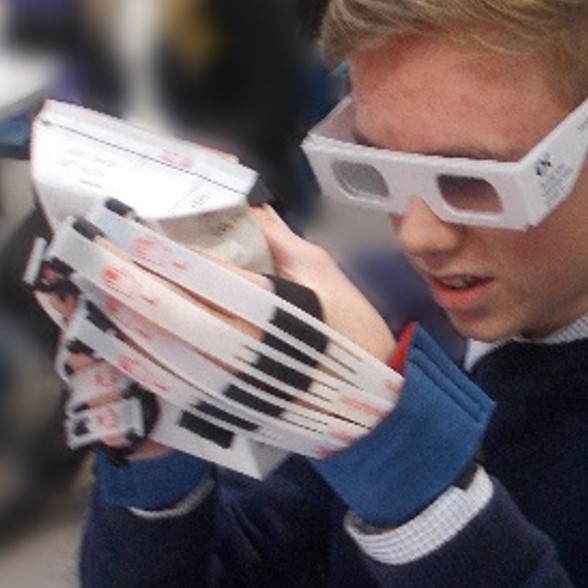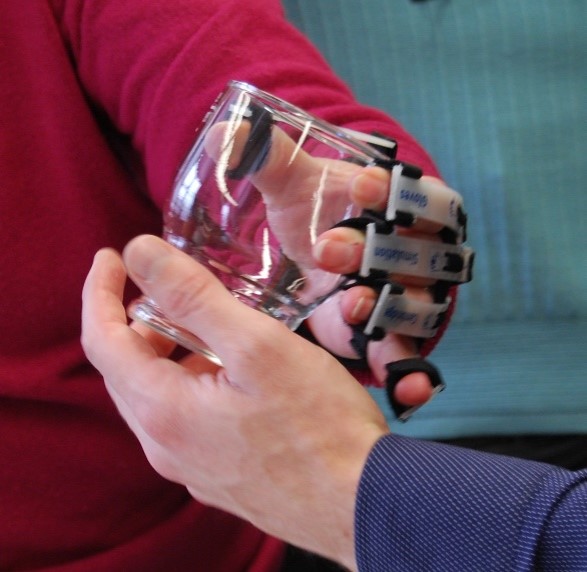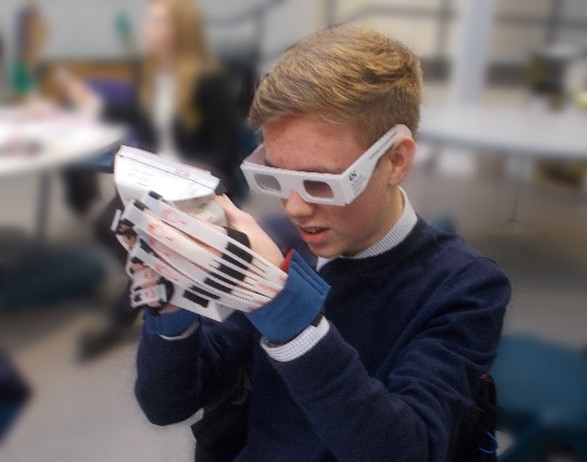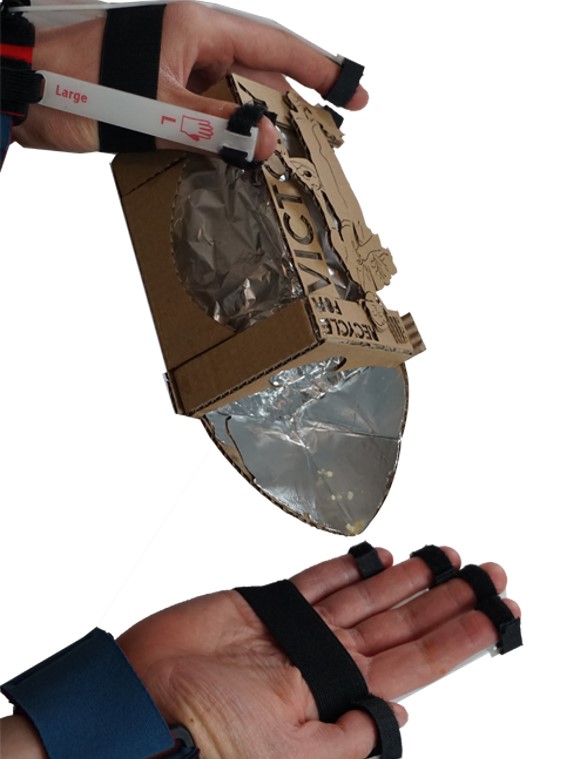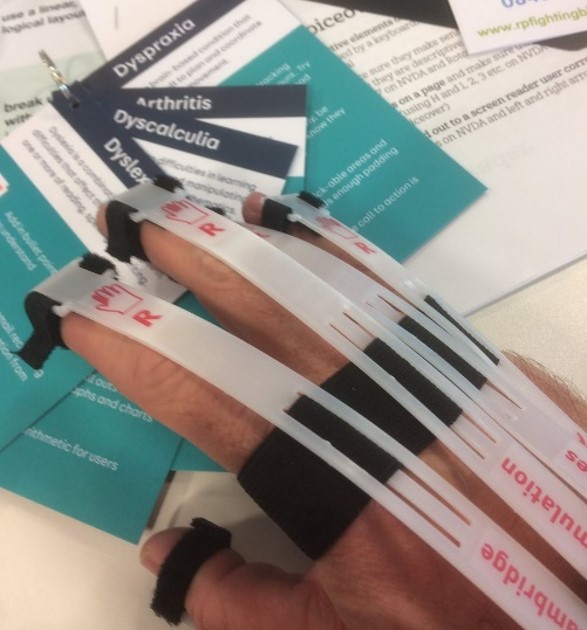Welcome to the 4th edition of the Inclusive Design Toolkit news bulletin from the Cambridge Engineering Design Centre. The bulletin showcases people’s achievements with the tools from this website, and also highlights a new tool for assessing the visual clarity of images on mobiles.
If you would like to receive this bulletin on a regular basis, or contribute to it, then please fill in the feedback form at the bottom of this page
On this page:
- A panel of seniors compare simulation tools to their real-life experiences
- Understanding users’ needs at St Peter’s High School
- Cambridge launches new tool for assessing the visual clarity of images on mobiles
- Creating inclusive crisp packaging
- Simulation tools help to champion accessibility at Auto Trader
A panel of seniors compare simulation tools to their real-life experiences
The EU-funded AGE-Ing. project aims to integrate older people into the development process of technical engineered products. They held a workshop with a panel of seniors of different demographic backgrounds and functional abilities. During the workshop, the panel members tried out various disability simulation tools, including the Cambridge Simulation gloves. They compared the tools with their real-life experiences and discussed if they came close to real age-related functional limitations.
“
The users stated that they could imagine that the limitation of finger movement would come close to that caused by severe arthritis. ”
There was lively discussion in the workshop about the Cambridge Simulation gloves. They felt that the gloves were a good way to get a first impression of the limited hand motion that comes with arthritis. However, as arthritis varies so much between people, they felt that it is crucial to also include real users with actual limitations in the product evaluation process.
Understanding users’ needs at St Peter’s High School
As part of the new GCSE and A-level specifications, students are required to learn how choices made in the design of products might negatively impact elderly and disabled users. To achieve this learning aim, teachers at St Peter’s High School set up some everyday tasks for them to complete while wearing the Cambridge Simulation Gloves and Glasses. These included opening jars and reading ingredients lists.
“
I found the equipment interesting to use. It gave me an insight into the limited movement and sight of the elderly, difficulties of arthritis, and also showed me why inclusive designs are important. ”
“
I could experience the pain my dad goes through daily and now I will do more to help him. ”
At the end of the session the students were asked to consider how they might apply the knowledge gained to inform their future designs.
“
The gloves helped me to understand the everyday difficulties of arthritis. I will remember this when designing in the future. ”
Cambridge launches new tool for assessing the visual clarity of images on mobiles
As smartphone use and mobile commerce continue to grow, the accessibility of images displayed on handheld devices is increasingly important. In many countries, the majority of e-commerce sales now happen on mobile devices, and excellent product imagery is critical for a desirable shopping experience.
Images that are intended for mobile devices are typically created using software on large screen devices. Clari-Fi, developed by the Cambridge Engineering Design Centre, enables designers to quickly assess the visual clarity of such images, without requiring them to be transferred on to a mobile device. Clari-Fi creates a large-screen Simulated Image, which gives an indication of the things that can be determined from that image when displayed on a mobile, as shown opposite.
“
Unilever understands the importance of creating great e-commerce images that work on mobile devices, and Clari-Fi gives us an objective test to prove this. We use Clari-Fi to check the visual clarity of the e-commerce images produced by our design agencies, before we provide them to retailers. The test is fast and scalable, and instantly eliminates design proposals that won’t work on mobile. ”
The Cambridge Engineering Design Centre has now launched Clari-Fi at clarifi.inclusivedesigntoolkit.com. We are considering how this approach might be developed into an objective accessibility standard for icons and images within user interfaces on mobiles. If you are interested in this topic, please fill in the feedback form at the bottom of this page.
When the Simulated Image produced by Clari-Fi is viewed on a large screen, it indicates what could be determined from the Original Image on a mobile. In this case, Clari-Fi demonstrates that it would not be possible to tell how many bars are in the pack on a mobile.
Creating inclusive crisp packaging
Students at the Dyson School of Design Engineering at Imperial College London were tasked to increase the sustainability of a packaging product. One of the students, Thomas Woodburn, was keen to redesign the standard packaging for crisps, currently made from seven layers of laminated metal foils and plastics. Around 10 million people have arthritis in the UK, and over 10 million crisp packets are consumed per week, so Thomas decided to redesign crisp packaging considering the needs of this user group. Through online research and telephone interviews, Thomas found that many people with arthritis have to use scissors to open the typical seal used in crisp packaging.
While wearing the Cambridge Simulation Gloves, Thomas experienced great difficulty trying to ‘pinch and pull’ to open crisp packaging. He also found the most comfortable grips kept the fingers close to a natural, slightly bent position. Using these insights, Thomas designed a corrugated fibreboard pack that opens with a small amount of force applied to the lid, using a mechanism for the lid that folds out three-dimensionally and enables the fingers to remain in a natural position.
Simulation tools help to champion accessibility at Auto Trader
Anya Braun and Chris Gibbons ran a campaign to champion accessibility across the business at Auto Trader. They kick started this project by running awareness workshops with the hope of inspiring others to join the cause. Anya reports:
“
We found the gloves extremely useful; participants were really engaged and were able to experience a better sense of empathy when carrying out everyday tasks. It’s brilliant that the gloves are not only designed to emulate the restriction that goes along with motor impairments but also the pressure and pain that is put onto joints. The blurred vision glasses were also very helpful in illustrating vision loss, especially when layering multiple glasses. ”
Since then Anya and Chris have formed a working group from all areas of the business to keep this at the forefront of everyone’s mind. They are also in the process of updating their pattern libraries, development tools and testing platforms to ensure that higher accessibility standards are met by highlighting areas which need more improvement to meet the WCAG and other guidelines.
Contact anya.braun@autotrader.co.uk or chris.gibbons@autotrader.co.uk for further information.
Feedback
We would welcome your feedback on this page:
Privacy policy. If your feedback comments warrant follow-up communication, we will send you an email using the details you have provided. Feedback comments are anonymized and then stored on our file server. If you select the option to receive or contribute to the news bulletin, we will store your name and email address on our file server for the purposes of managing your subscription. You can unsubscribe and have your details deleted at any time, by using our Unsubscribe form. If you select the option to receive an activation code, we will store your name and email address on our fileserver indefinitely. This information will only be used to contact you for the specific purpose that you have indicated; it will not be shared. We use this personal information with your consent, which you can withdraw at any time.
Read more about how we use your personal data. Any e-mails that are sent or received are stored on our mail server for up to 24 months.


